Part 1: 1941
Field Manual FM 30-34 describes
itself as the basic USA field manual for the "identification of
Soviet-Russian aircraft". It was issued on the 18th July 1941, only a
mere month after the onset of the Nazi invasion of the USSR. The
timing of this document, as a result, could not have been more
important; and yet, alas, the contents of the same document could not
have been more ridiculous.
The concept of "Military Intelligence" is regarded by more than a few as a gross contradiction of terms even in the best cases, and yet FM 30-34 is one of those documents which makes any repudiation of this criticism hugely difficult indeed, no matter how apologetic the observer. One is stuck repeatedly by the sheer incompetence of this report, in fact so much so that one comes away with the over-riding impression of a subject which was unworthy of serious treatment in the minds of the USA government or military. The compiler(s) of this document have issued a work which resides, lost and forlorn, somewhere between indifference and stupidity [the reader will decide for themselves where the exact position lies]. Whatever the explanation for this hopeless effort, the report smacks heavily of the usual arrogant Western dismissal of all and anything of Soviet origin as "obviously inferior" and without significance.
The foregoing rebuke should not be seen to be unkind to FM 30-34; it is certainly not (as we shall see). It is true that intelligence collection in wartime is fraught with difficulties, and one can certainly expect that errors of every type will, and did, exist in documents of this type. The correct nomenclatures of foreign aircraft are often unknown, for example, even when discussing better understood subjects such as the German Luftwaffe (examples of the majority of whose aircraft were already in Allied hands). The mis-identification of certain features or equipment of foreign aircraft, their performance, or other such technical data is also not unusual, and would have been expected. FM 30-34 certainly features all of these; the difference in this report lies in the staggering amount of nonsensical contradiction of the evidence included in the report, itself, and in the similar fantastical expounding upon topics for which one simply cannot fathom any source of purporting data. These appalling sections are equalled, however, by the categorical omission of any timely information, even to include evidence of aircraft appearing 3-4 years previous to the issue of the report. The entire effort was a tour de force in error.
Here, then, with accompanying notation and illustration, is an examination of the most extraordinary portions of Field Manual FM 30-34.

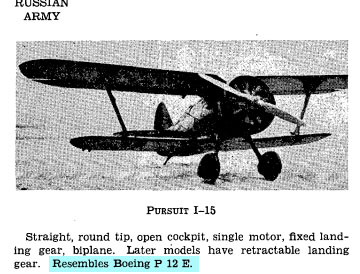
The general description of the I-15 is not objectionable, and one can certainly understand that sources outside of the USSR could confuse the I-15 with the I-153, resulting in the quip, "later versions have retractable landing gear". Fair enough. However, to then summarily state that the I-15, "Resembles the Boeing P 12 E", is very poor.
One presumes that the reader is to understand from this comment that the I-15 is a ("yet another") "copy" of the Boeing design. But the two aircraft bear very little comparison at all, most notably in the I-15's main feature-- its gull wing centre-section, which the Boeing lacks entirely. The Boeing has a square fin of corrugated sheet construction, heavily braced landing gear struts, a normal straight wing centre-section, inter-plane N-strut bracing and a huge head combing feature aft of the pilot; none of which is shared with the I-15. Aside from having a radial engine with a Townend Ring they are entirely dissimilar, actually, and comparing these two is the equivalent of stating that the Bf 109 "resembles" the Curtiss P-40.

The lack of attention to any detail in this report is neatly demonstrated by the section relating to the Polikarpov I-16. Here we are informed that the aircraft features an "inclosed [sic]" cockpit [from which we may understand that the hapless compiler meant 'enclosed'], despite the fact that the photograph printed directly above the explanatory text shows what is obviously an open cockpit design with a windscreen.
...And despite the fact that so does the next illustration showing a Type 10 in Finnish AF service with a similar cockpit arrangement.
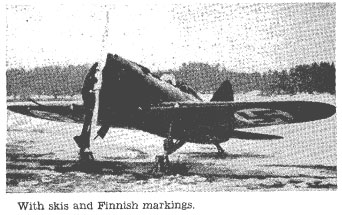 No, such bothersome minutiae as evidence (or grammar, or spelling,
or literacy) certainly would not be allowed to complicate FM 30-34. The
following section does reveal general arrangement drawings of what is
likely a Type 5 (which did have an enclosed cockpit), but even so this
seems little excuse in light of the clear evidence printed directly in
the report. Moreover, one is left to wonder aloud how-- even if the
draughtsman had only these two photographs to work with at all-- that
the following planform drawings might have emerged.
No, such bothersome minutiae as evidence (or grammar, or spelling,
or literacy) certainly would not be allowed to complicate FM 30-34. The
following section does reveal general arrangement drawings of what is
likely a Type 5 (which did have an enclosed cockpit), but even so this
seems little excuse in light of the clear evidence printed directly in
the report. Moreover, one is left to wonder aloud how-- even if the
draughtsman had only these two photographs to work with at all-- that
the following planform drawings might have emerged.
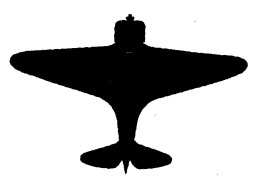
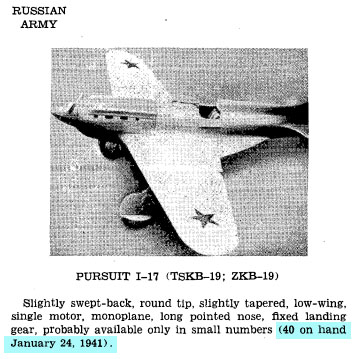
Many intelligence sources came to believe that the VVS was operating a fighter aircraft like this one as the "I-17". Its existence was widely reported in German, British, Japanese, Romanian, Italian, and other sources, and thus it would not be fair to criticise FM 30-34 for doing likewise.
The inability of the compiler of the section to recognise the retractable landing gear, on the other hand, is typical of this document. But, most distressingly, why is the spurious total of "40" available aircraft cited in the report? From whence could such specifically incorrect data (date and number, to precision) have emerged? Note the confusion over the alternate names given, with it seemingly not understood that "ZKB" is the Czech language transliteration of "TsKB".

Apparently, the fact that the USSR negotiated a Production License for the Seversky P-35 is solid enough proof for FM 30-34 that this machine was in operational VVS use in 1941. Indeed, one might understand from the text that both single and twin-seat versions were so employed-- very widely it would seem. Moreover, what-on-earth type of "convoy" work these aircraft might have been engaged in during July 1941 is surely beyond anyone's guess?
Of course, later in the same report we are informed that the float-plane version of the P-35 is also available in VMF (Naval) service, powered by the German BMW VI engine, no less.
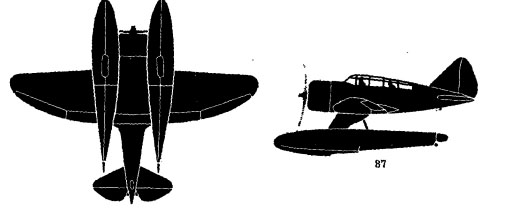
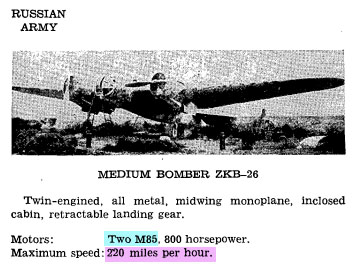
The veritable old SB bomber has been ridiculously mis-named throughout Western literature, and so to find it identified here as the "ZKB-26" may come as no surprise. And to be fair, as mentioned, wartime nomenclature is notoriously difficult to figure out.
However, to determine that this aircraft has mounted Turmansky M-85 radial engines into squarish-ovoid cowlings with car-type radiators positioned in front is breathtakingly incompetent. It is doubtful that any novice enthusiast could look at this clear image and get it wrong, but that the "best and brightest" of the US War Department's analysts-- trained experts in aviation, mind-- could do so beggars any description. The maximum speed rating as listed, "220 mph", is also quite silly, derogatory in nature, and equally without basis.
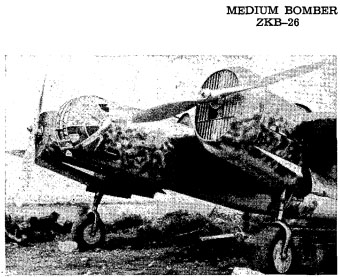

Immediately following the "ZKB-26", one is introduced to the "SB-1" bomber. No even marginally competent aviation analyst -- which immediately rules out of those compiling this
report-- would fail to notice that the general arrangement drawing depicts the same aircraft
as previously with the "ZKB-26", but once again this fact did not deter
FM 30-34.
The "SB-1" also sports the miraculous installation of radial engines (this time M-25s) into square cowlings with frontal radiators, as with its predecessor. The landing gear is given as "fixed", despite the fact that no evidence is present for such a claim, that the "ZKB-26" had retractable gear, and that no image of such a feature is presented.

The next listed machine, perhaps inevitably, is the "SB-2". Some credtit is due here to mark the corrcet OKB prototype designation, but in general the same pattern of absurd comedy error continues.
The sheer similarity of the description of the aircraft (virtually verbatim), not to mention the accompanying photograph, might be expected to alert the report compiler to the fact that this was yet again the same aircraft previously identified at the "ZKB-26" and "SB-1"; but, no, not in FM 30-34. This aircraft was correctly identified as having been equipped with M-100 motors and ShKAS ("Shkaas" in the report) machine-guns, and the listed performance and weight data was not outside of the bounds of reasonable reporting. One presumes, in fact, that such data was supplied by Finnish or Czech sources who were familiar with the SB.
However, none of these reliable sources could interrupt the report's considerable penchant for error. Indeed, so serious and ingrained was this type of misdirection that-- despite all of the previously seen and published evidence in the report itself, including photographs and pretty accurate general arrangement drawings-- the plan view for the "SB-2" was given thus:
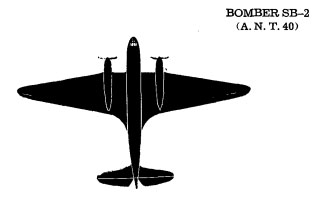
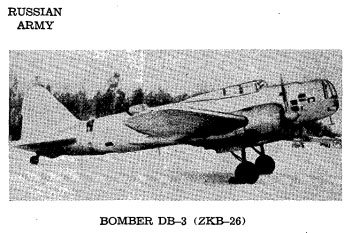
Here we have the DB-3 bomber, and once again the aircraft is also called the "ZKB-26". Apparently, at least according to FM 30-34, many Soviet aircraft were named "ZKB-26", of which this is the second-- but by no means the last-- example.
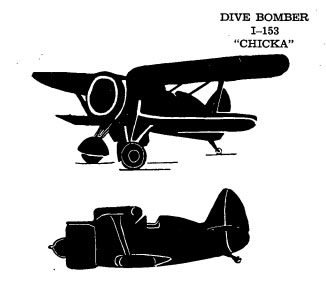
Competence in language-- including the English language, alas-- was certainly no feature of FM 30-34, and thus we can understand the fairly appalling bastardisation of Chaika into "Chicka", although we might have to extend our apologies to any female Latin-American readers. Be that as it may, the designation I-153 was correctly reported in this case.
However, how on this earth have the compilers of this report identified the I-153 as a dive bomber ? Is the reader to assume that the Chaika was "obviously similar" to the Curtiss F11C Goshawk (they both have radial engines, after all, and are biplanes), and thus must be a dive bomber type aircraft? FM 30-34, sadly, does not expound upon its ground-breaking theories of interpretation here.
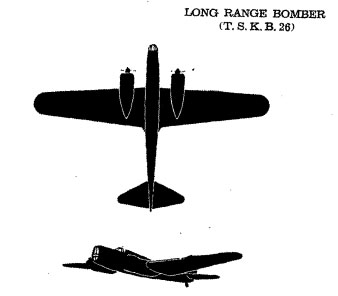
Apparently variants of the A.W.38 Whitley bomber were in use with the VVS, also bearing the designation "TsKB-26". Those tricky Communists....
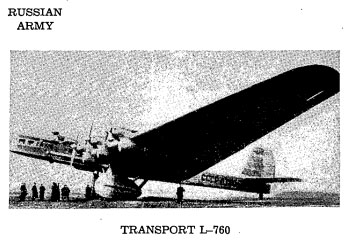
Soviet propaganda workers would have been devastated, no doubt, had they managed to read this portion of the report. The Maxim Gor'ki (ANT-20) was surely one of the most extensively filmed aircraft in history, the subject of several epic Soviet propaganda films which were widely distributed during the 1930s world-wide (obviously depicting the ANT-20bis after 1935). One doubts seriously if any person with even a passing knowledge of aviation at the time might not have recognised this brute, but such accolades are in full realisation for the magnificent compilers FM 30-34.
According to the intrepid report's "intelligence experts", the ANT-20 were in fact a species of Soviet transport aircraft bearing the designation "L-760". These luminaries no doubt sussed out this clever nomenclature by noting one of the the machine's civil registrations emblazoned on the wings and fuselage, and deciding thereupon that such was obviously the aircraft's type name.
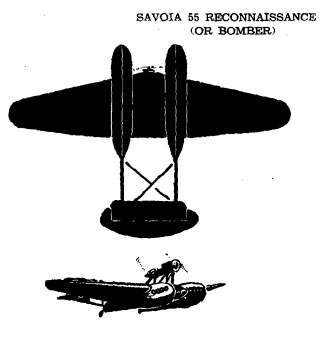
The compilers of FM 30-34 were obviously trend-setters in regards to the manufacture of complex conspiracy theories. All manner of USA aircraft were surreptitiously in use across the USSR (not to mention illicit "copies" of various designs), but these were apparently joined by Fascist aircraft from Italy.
Unbeknownst to the rest of us, the Soviet Navy (VMF) was apparently operating large numbers of SM.55 flying boats in 1941. One hopes that Il Duce never found out this astonishing information, lest there be serious trouble, no?
For all of the astounding errors present in FM 30-34 regarding the known types of Soviet aircraft, it is equally impossible to understand the document's utter failure to report on newer types of machines which would have been obvious to any type of competent intelligence staff. This is all the more unfathomable when one realises that in 1941 the USA code breakers were reading virtually all of the diplomatic wire traffic from Washington D.C. (including the USSR's), virtually in real time (and often faster than the foreign embassies), and should have had access to reports not only from Finland regarding Soviet aircraft, but copious quantities of German reporting (often sent via diplomatic wire) as well. That none of this material was seen by the compilers of the Chief of Staff's "Basic Field Manual" on the topic is beyond any powers of description.
The MiG-3 had been in regimental service for nearly six months by July 1941. It was the subject of exceptionally detailed reporting by German sources, including two known diplomatic wires (sent to the German embassy in Washington DC) concerning military equipment compiled whilst visiting the USSR during 1941. The aircraft was also shown clearly, and identified by type, in the same TASS film from which the still image of the I-16 (Type 24) which features in FM 30-34 [see above] was taken. In fact, MiG fighters were widely seen in cine film material of the time, and were consistently publicised by Soviet authorities. Nowhere in this document does one read anything of the aircraft, nor anything like it.
Several new and important aircraft types were just entering, or just about to enter, regimental VVS service in July 1941. The Yak-1, LaGG-3 and Il-2 were all in series manufacture then, and some were just appearing at the front. No mention is made of these aircraft in any way (though there is a spurious machine called "I-18" given, complete with an M-105 motor but no further details).
Similarly, no attempt was made to investigate aircraft which had been seen widely just prior to the war in aviation salons across Europe. Mention might surely have been expected in such a report of types like the Er-2, I-180, AIR-5 thru -9, and such like, but again no colation of the relevant available hard data seems to have besmirched the pages of FM 30-34.
Lastly, one is compelled to wonder-- given the timing of the report, e.g. July 1941-- why the US Chief of Staff simply did not ask the Soviet government for correct information regarding their aviation forces? Harry Hopkins, personal aide to F.D. Roosevelt, was just then in Moscow, there specifically to discuss Allied-Soviet co-operation and assess Soviet military strength. It would have been obviously within his brief to ask for such information, and most certainly the Soviets would have happily supplied it if queried. However, with the superlative luminaries then compiling FM 30-34 at work, the USA "intelligence" community clearly felt that such tawdry and vulgar antics as asking for information were clearly not needed, and the expert team of compilers were left to get on with the job of issuing their Basic Field Manual for the Identification of Soviet-Russian Aircraft.
FM 30-34 expounds upon such amazing facts with consummate ease, not to mention consummate error. One hopes and prays fervently that this was indeed a shambolic work of farcical disregard for Soviet aviation, and not given any serious attention nor consideration. If not, should the buffoons who compiled this report in fact have been responsible for producing intelligence which might save the lives of Allied soldiers at war, then surely all such affected personnel are now quite dead.
An exhaustive list of the remarkable facts in this volume are too many to list comprehensively, but we can leave the reader with a few more pearls of wisdom (and no doubt scratching their heads in disbelief at such a report):

The concept of "Military Intelligence" is regarded by more than a few as a gross contradiction of terms even in the best cases, and yet FM 30-34 is one of those documents which makes any repudiation of this criticism hugely difficult indeed, no matter how apologetic the observer. One is stuck repeatedly by the sheer incompetence of this report, in fact so much so that one comes away with the over-riding impression of a subject which was unworthy of serious treatment in the minds of the USA government or military. The compiler(s) of this document have issued a work which resides, lost and forlorn, somewhere between indifference and stupidity [the reader will decide for themselves where the exact position lies]. Whatever the explanation for this hopeless effort, the report smacks heavily of the usual arrogant Western dismissal of all and anything of Soviet origin as "obviously inferior" and without significance.
The foregoing rebuke should not be seen to be unkind to FM 30-34; it is certainly not (as we shall see). It is true that intelligence collection in wartime is fraught with difficulties, and one can certainly expect that errors of every type will, and did, exist in documents of this type. The correct nomenclatures of foreign aircraft are often unknown, for example, even when discussing better understood subjects such as the German Luftwaffe (examples of the majority of whose aircraft were already in Allied hands). The mis-identification of certain features or equipment of foreign aircraft, their performance, or other such technical data is also not unusual, and would have been expected. FM 30-34 certainly features all of these; the difference in this report lies in the staggering amount of nonsensical contradiction of the evidence included in the report, itself, and in the similar fantastical expounding upon topics for which one simply cannot fathom any source of purporting data. These appalling sections are equalled, however, by the categorical omission of any timely information, even to include evidence of aircraft appearing 3-4 years previous to the issue of the report. The entire effort was a tour de force in error.
Here, then, with accompanying notation and illustration, is an examination of the most extraordinary portions of Field Manual FM 30-34.

| The I-15 |

The general description of the I-15 is not objectionable, and one can certainly understand that sources outside of the USSR could confuse the I-15 with the I-153, resulting in the quip, "later versions have retractable landing gear". Fair enough. However, to then summarily state that the I-15, "Resembles the Boeing P 12 E", is very poor.
...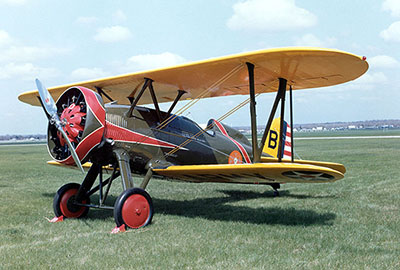 ....
....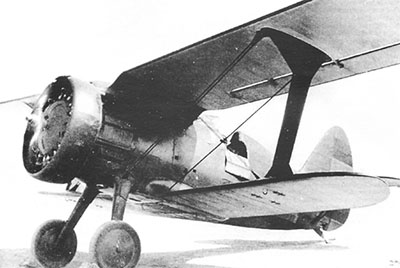
 ....
....
One presumes that the reader is to understand from this comment that the I-15 is a ("yet another") "copy" of the Boeing design. But the two aircraft bear very little comparison at all, most notably in the I-15's main feature-- its gull wing centre-section, which the Boeing lacks entirely. The Boeing has a square fin of corrugated sheet construction, heavily braced landing gear struts, a normal straight wing centre-section, inter-plane N-strut bracing and a huge head combing feature aft of the pilot; none of which is shared with the I-15. Aside from having a radial engine with a Townend Ring they are entirely dissimilar, actually, and comparing these two is the equivalent of stating that the Bf 109 "resembles" the Curtiss P-40.
| The I-16 |

The lack of attention to any detail in this report is neatly demonstrated by the section relating to the Polikarpov I-16. Here we are informed that the aircraft features an "inclosed [sic]" cockpit [from which we may understand that the hapless compiler meant 'enclosed'], despite the fact that the photograph printed directly above the explanatory text shows what is obviously an open cockpit design with a windscreen.
...And despite the fact that so does the next illustration showing a Type 10 in Finnish AF service with a similar cockpit arrangement.


We will never know, presumably....
| The I-17 |

Many intelligence sources came to believe that the VVS was operating a fighter aircraft like this one as the "I-17". Its existence was widely reported in German, British, Japanese, Romanian, Italian, and other sources, and thus it would not be fair to criticise FM 30-34 for doing likewise.
The inability of the compiler of the section to recognise the retractable landing gear, on the other hand, is typical of this document. But, most distressingly, why is the spurious total of "40" available aircraft cited in the report? From whence could such specifically incorrect data (date and number, to precision) have emerged? Note the confusion over the alternate names given, with it seemingly not understood that "ZKB" is the Czech language transliteration of "TsKB".
| The P-35 |

Apparently, the fact that the USSR negotiated a Production License for the Seversky P-35 is solid enough proof for FM 30-34 that this machine was in operational VVS use in 1941. Indeed, one might understand from the text that both single and twin-seat versions were so employed-- very widely it would seem. Moreover, what-on-earth type of "convoy" work these aircraft might have been engaged in during July 1941 is surely beyond anyone's guess?
Of course, later in the same report we are informed that the float-plane version of the P-35 is also available in VMF (Naval) service, powered by the German BMW VI engine, no less.

| The ZKB-26 |

The veritable old SB bomber has been ridiculously mis-named throughout Western literature, and so to find it identified here as the "ZKB-26" may come as no surprise. And to be fair, as mentioned, wartime nomenclature is notoriously difficult to figure out.
However, to determine that this aircraft has mounted Turmansky M-85 radial engines into squarish-ovoid cowlings with car-type radiators positioned in front is breathtakingly incompetent. It is doubtful that any novice enthusiast could look at this clear image and get it wrong, but that the "best and brightest" of the US War Department's analysts-- trained experts in aviation, mind-- could do so beggars any description. The maximum speed rating as listed, "220 mph", is also quite silly, derogatory in nature, and equally without basis.

| The SB-1 |

The "SB-1" also sports the miraculous installation of radial engines (this time M-25s) into square cowlings with frontal radiators, as with its predecessor. The landing gear is given as "fixed", despite the fact that no evidence is present for such a claim, that the "ZKB-26" had retractable gear, and that no image of such a feature is presented.
| The SB-2 |

The next listed machine, perhaps inevitably, is the "SB-2". Some credtit is due here to mark the corrcet OKB prototype designation, but in general the same pattern of absurd comedy error continues.
The sheer similarity of the description of the aircraft (virtually verbatim), not to mention the accompanying photograph, might be expected to alert the report compiler to the fact that this was yet again the same aircraft previously identified at the "ZKB-26" and "SB-1"; but, no, not in FM 30-34. This aircraft was correctly identified as having been equipped with M-100 motors and ShKAS ("Shkaas" in the report) machine-guns, and the listed performance and weight data was not outside of the bounds of reasonable reporting. One presumes, in fact, that such data was supplied by Finnish or Czech sources who were familiar with the SB.
However, none of these reliable sources could interrupt the report's considerable penchant for error. Indeed, so serious and ingrained was this type of misdirection that-- despite all of the previously seen and published evidence in the report itself, including photographs and pretty accurate general arrangement drawings-- the plan view for the "SB-2" was given thus:

| The DB-3, aka the other ZKB-26 |

Here we have the DB-3 bomber, and once again the aircraft is also called the "ZKB-26". Apparently, at least according to FM 30-34, many Soviet aircraft were named "ZKB-26", of which this is the second-- but by no means the last-- example.
| The I-153 |

Competence in language-- including the English language, alas-- was certainly no feature of FM 30-34, and thus we can understand the fairly appalling bastardisation of Chaika into "Chicka", although we might have to extend our apologies to any female Latin-American readers. Be that as it may, the designation I-153 was correctly reported in this case.
However, how on this earth have the compilers of this report identified the I-153 as a dive bomber ? Is the reader to assume that the Chaika was "obviously similar" to the Curtiss F11C Goshawk (they both have radial engines, after all, and are biplanes), and thus must be a dive bomber type aircraft? FM 30-34, sadly, does not expound upon its ground-breaking theories of interpretation here.
| The third TsKB-26 |

Apparently variants of the A.W.38 Whitley bomber were in use with the VVS, also bearing the designation "TsKB-26". Those tricky Communists....
| The L-760 |

Soviet propaganda workers would have been devastated, no doubt, had they managed to read this portion of the report. The Maxim Gor'ki (ANT-20) was surely one of the most extensively filmed aircraft in history, the subject of several epic Soviet propaganda films which were widely distributed during the 1930s world-wide (obviously depicting the ANT-20bis after 1935). One doubts seriously if any person with even a passing knowledge of aviation at the time might not have recognised this brute, but such accolades are in full realisation for the magnificent compilers FM 30-34.
According to the intrepid report's "intelligence experts", the ANT-20 were in fact a species of Soviet transport aircraft bearing the designation "L-760". These luminaries no doubt sussed out this clever nomenclature by noting one of the the machine's civil registrations emblazoned on the wings and fuselage, and deciding thereupon that such was obviously the aircraft's type name.
| The Savoia 55 |

The compilers of FM 30-34 were obviously trend-setters in regards to the manufacture of complex conspiracy theories. All manner of USA aircraft were surreptitiously in use across the USSR (not to mention illicit "copies" of various designs), but these were apparently joined by Fascist aircraft from Italy.
Unbeknownst to the rest of us, the Soviet Navy (VMF) was apparently operating large numbers of SM.55 flying boats in 1941. One hopes that Il Duce never found out this astonishing information, lest there be serious trouble, no?
| Appalling Omissions |
For all of the astounding errors present in FM 30-34 regarding the known types of Soviet aircraft, it is equally impossible to understand the document's utter failure to report on newer types of machines which would have been obvious to any type of competent intelligence staff. This is all the more unfathomable when one realises that in 1941 the USA code breakers were reading virtually all of the diplomatic wire traffic from Washington D.C. (including the USSR's), virtually in real time (and often faster than the foreign embassies), and should have had access to reports not only from Finland regarding Soviet aircraft, but copious quantities of German reporting (often sent via diplomatic wire) as well. That none of this material was seen by the compilers of the Chief of Staff's "Basic Field Manual" on the topic is beyond any powers of description.
The MiG-3 had been in regimental service for nearly six months by July 1941. It was the subject of exceptionally detailed reporting by German sources, including two known diplomatic wires (sent to the German embassy in Washington DC) concerning military equipment compiled whilst visiting the USSR during 1941. The aircraft was also shown clearly, and identified by type, in the same TASS film from which the still image of the I-16 (Type 24) which features in FM 30-34 [see above] was taken. In fact, MiG fighters were widely seen in cine film material of the time, and were consistently publicised by Soviet authorities. Nowhere in this document does one read anything of the aircraft, nor anything like it.
Several new and important aircraft types were just entering, or just about to enter, regimental VVS service in July 1941. The Yak-1, LaGG-3 and Il-2 were all in series manufacture then, and some were just appearing at the front. No mention is made of these aircraft in any way (though there is a spurious machine called "I-18" given, complete with an M-105 motor but no further details).
Similarly, no attempt was made to investigate aircraft which had been seen widely just prior to the war in aviation salons across Europe. Mention might surely have been expected in such a report of types like the Er-2, I-180, AIR-5 thru -9, and such like, but again no colation of the relevant available hard data seems to have besmirched the pages of FM 30-34.
Lastly, one is compelled to wonder-- given the timing of the report, e.g. July 1941-- why the US Chief of Staff simply did not ask the Soviet government for correct information regarding their aviation forces? Harry Hopkins, personal aide to F.D. Roosevelt, was just then in Moscow, there specifically to discuss Allied-Soviet co-operation and assess Soviet military strength. It would have been obviously within his brief to ask for such information, and most certainly the Soviets would have happily supplied it if queried. However, with the superlative luminaries then compiling FM 30-34 at work, the USA "intelligence" community clearly felt that such tawdry and vulgar antics as asking for information were clearly not needed, and the expert team of compilers were left to get on with the job of issuing their Basic Field Manual for the Identification of Soviet-Russian Aircraft.
| ...And so on.... |
FM 30-34 expounds upon such amazing facts with consummate ease, not to mention consummate error. One hopes and prays fervently that this was indeed a shambolic work of farcical disregard for Soviet aviation, and not given any serious attention nor consideration. If not, should the buffoons who compiled this report in fact have been responsible for producing intelligence which might save the lives of Allied soldiers at war, then surely all such affected personnel are now quite dead.
An exhaustive list of the remarkable facts in this volume are too many to list comprehensively, but we can leave the reader with a few more pearls of wisdom (and no doubt scratching their heads in disbelief at such a report):
| Not only was the Shavrov Sh-2 actually named the "MBR-4", it was also in fact powered by a 600 hp M-17 engine. |
| The Navy (VMF) operated a secret 'fighter seaplane' with twin-floats powered by the M-17 motor. |
| There were no fewer than seven operational Soviet aircraft in 1941 named the "TsKB-26" (or "ZKB-26"). |
| The TB-7 was preceded in service by identical version of the bomber bearing the designations "TB-4", "TB-5" and "TB-6". |
| The secret ground-attack machine "LR" was reported, based upon the RZ biplane, which was fitted "perhaps with two motors in the wing". |
